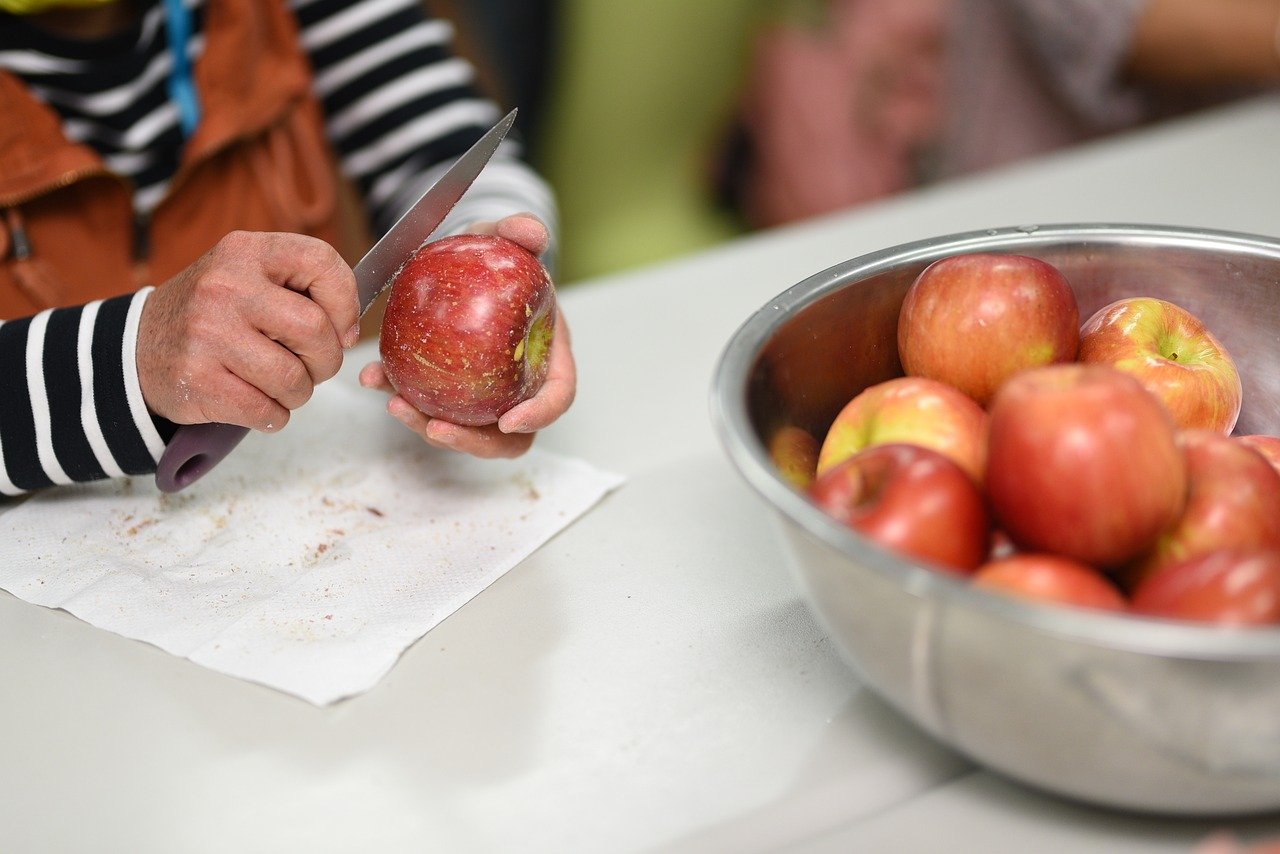A kitchen knife is one of the most essential tools in any kitchen, yet it’s also one of the most misused. Improper knife techniques not only make cooking harder but also increase the risk of accidents and injuries. Avoiding these common mistakes will help you use your knives more effectively and safely, while also preserving their longevity.
1. Using the Wrong Knife for the Task
Each kitchen knife is designed for specific purposes. Using a paring knife to slice bread or a chef’s knife to peel fruits not only makes the task more difficult but can also damage the knife or result in injury.
Solution: Learn the different types of knives and their uses. For example:
- A chef’s knife is ideal for chopping, slicing, and dicing.
- A paring knife is perfect for peeling and intricate cuts.
- A bread knife is designed for slicing through crusty loaves and soft cakes.

2. Cutting on Hard Surfaces
Using knives on surfaces like glass, granite, or metal can dull the blade quickly and increase the risk of slipping.
Solution: Always use a cutting board made of wood or plastic. These materials are gentle on the blade and provide a stable surface for cutting.
3. Improper Grip
Holding a knife incorrectly reduces control and increases the likelihood of accidents. Common mistakes include gripping the handle too loosely or placing your index finger on the top of the blade.
Solution: Use a firm grip with your thumb and index finger pinching the blade near the handle. This grip offers better control and precision.
4. Not Keeping Knives Sharp
A dull knife requires more force to cut, which can cause it to slip and result in injuries. Additionally, dull blades can crush food rather than slicing it cleanly.
Solution: Regularly hone your knife with a honing steel to maintain the edge. Sharpen your knives with a whetstone or professional service every few months, depending on usage.
5. Improper Cutting Technique
Using the wrong cutting technique can lead to uneven cuts and increase the risk of injury. Common errors include sawing through food or using excessive force.
Solution: Use the appropriate cutting motion for the task:
- Employ a rocking motion with a chef’s knife for chopping.
- Use a gentle slicing motion for softer foods like fish or tomatoes.
- Avoid sawing motions, which can damage the blade and produce uneven cuts.
6. Leaving Knives in the Sink
Leaving knives submerged in soapy water is a safety hazard. Someone could accidentally reach into the sink and cut themselves.
Solution: Always clean knives immediately after use. Hand wash them with warm, soapy water, and dry them thoroughly before storing.
7. Storing Knives Improperly
Storing knives loosely in a drawer can dull the blades and create a safety risk. Knives can rub against other utensils, damaging both the blade and handle.
Solution: Store knives in a knife block, on a magnetic strip, or with blade guards. This protects the edges and ensures they’re safely organized.
8. Cutting Without Stabilizing the Food
Cutting unstable food increases the chance of the knife slipping. This is particularly common when cutting round or uneven items like onions, carrots, or squash.
Solution: Always stabilize food by creating a flat surface. For example, cut a small slice off one side of an onion to create a stable base before chopping.
9. Applying Too Much Force
Using excessive force to cut through tough ingredients can damage the blade and increase the likelihood of accidents. This is especially true for delicate knives, like Japanese blades.
Solution: Let the knife’s sharpness do the work. For harder ingredients, such as squash, use a rocking motion with a sturdy chef’s knife.
10. Not Maintaining Proper Hand Placement
Failing to keep your non-dominant hand in the correct position can lead to accidental cuts. Many people place their fingers too close to the blade or flat on the cutting surface.
Solution: Use the “claw grip.” Curl your fingers inward, holding the food with your knuckles acting as a guide for the blade. This technique minimizes the risk of cutting yourself.
11. Overloading the Cutting Board
Having too much food on the cutting board at once reduces your workspace and increases the risk of slipping or accidental cuts.
Solution: Work in batches. Clear the cutting board periodically to maintain a clean, spacious area for cutting.
12. Neglecting Knife Maintenance
Improper maintenance, such as failing to clean or dry knives immediately, can lead to rust, corrosion, and reduced performance.
Solution: Always clean your knives promptly, dry them thoroughly, and store them properly to preserve their condition.
13. Using a Knife for Non-Cutting Tasks
Using a knife to open packages, pry open cans, or perform other non-cooking tasks can damage the blade and compromise its safety.
Solution: Keep utility tools, like scissors or can openers, on hand for non-cutting tasks. Reserve your knives solely for food preparation.
14. Ignoring the Importance of Quality Knives
Using low-quality knives can lead to frustration, poor performance, and increased risk of injury.
Solution: Invest in high-quality knives designed for durability and performance. A sharp, well-made knife is safer and more effective in the kitchen.
Find the Perfect Knife Set for Your Kitchen
Avoiding these common mistakes is easier with the right tools. For a wide selection of high-quality knives and knife sets, visit All Knife Sets. Explore the home page for expert advice or head to the shop page to find the perfect knives for your needs.
By addressing these common knife mistakes, you’ll not only improve your cooking skills but also create a safer and more enjoyable kitchen environment. Remember, proper knife usage and maintenance are essential for efficiency and safety—so make every cut count!


